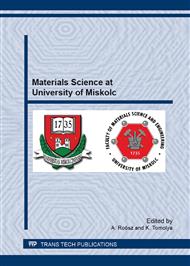p.233
p.241
p.248
p.259
p.268
p.275
p.284
p.294
p.304
Scanning Transmission Electron Microscopy Analysis of Diesel Soot Particles for Source Attribution
Abstract:
Scanning transmission electron microscopy (STEM) coupled with energy dispersive x-ray analysis (EDX) has been used to characterize the elemental composition of diesel soot samples. The STEM employed in this investigation is the Vacuum Generators Microscope HB603, with a microanalytical resolution approaching 1 nm, allowing the analysis of individual soot particles and aggregates. Quantification of the EDX spectra is accomplished after background and absorption corrections. This information can then be used to pinpoint the fuels and combustion process from which the soot originated. Six diesel soots were analyzed in this study including three from a U.S. Bureau of Mines diesel test engine, two from a West Virginia University diesel test engine, and one from an Orion diesel bus engine. This research showed that soot impurities were found throughout the aggregates, and that only one or two soot particles were necessary to obtain a chemical fingerprint. Some of these elements may be traced to the fuel and lubricant. Other elements were components of the engine itself that combined with the soot particulates during the combustion process. The concept of using a ‘Truth Table’ for the purpose of source attribution is also introduced.
Info:
Periodical:
Pages:
304-313
Citation:
Online since:
March 2013
Authors:
Keywords:
Price:
Сopyright:
© 2013 Trans Tech Publications Ltd. All Rights Reserved
Share:
Citation:


